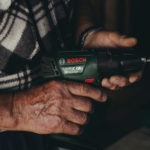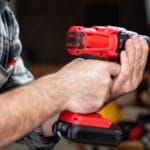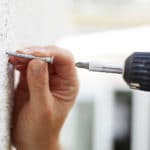Drillers are no longer just used for drilling; they are now being utilized as a driver or impact driver. This is both a benefit and a downside to these tools. Now that there is a second function, the drill now has to fit another purpose. It can be difficult to decide whether or not using this tool as a driver is better than using it as a drill.
There are several aspects to consider such as the power source and torque when deciding which is right for the job. This article will focus on these two points to determine which tool is more useful, an impact driver or a hammer drill.
When it comes to drilling applications, there are 2 main options available to the homeowner or DIYer: a rotary hammer drill or an impact driver. These two tools share some of the same features, but some major differences set them apart.
If you’re wondering which one is more effective or which one is better for your application, keep reading to find out the answer!
What is an Impact Driver?
An impact driver is a drill/driver that can apply reverse torque. This allows you to drive large screws into materials such as hardwood. The impact driver is also considered to be much more lightweight in comparison to hammer drivers.
It is powered by a battery and can be used in tight spaces.
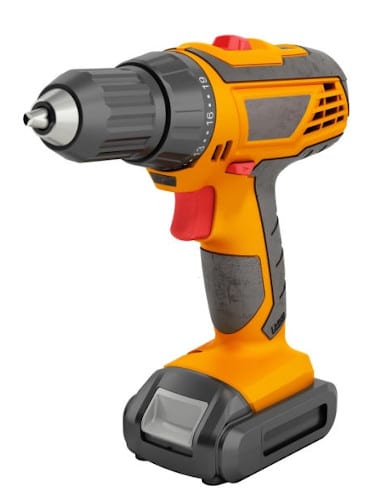
What is an Impact Driver Used For?
The driver has different uses, but its main function is to drive long screws into harder materials such as hardwoods and different grades of metal. The tool also can drive screws into materials that the drill cannot. This is due to the reverse torque which gives it added power. This tool is also lightweight and can be used in small spaces which makes it easy to control.
Impact driver has other uses like:
- Driving screws into hard-to-reach spaces.
- Driving screws into metals that the drill can’t handle.
- Driving screws into hardwood where the drill can’t.
- Driving screws into wood that is too small for the drill.
- It is more effective when driving screws for a long period.
- It can also be used to remove rusted bolts and screws where the drill can’t.
- It is also used to remove stripped or rusted screws.
- It is perfect for working in tight spaces like the engine bay.
- It can also be used to tighten screws and bolts.
How Does an Impact Driver Work?
This driver works with a rotating motion, the bottom part of the driver is in contact with what you are trying to tighten. This allows it to have an increased speed and torque power. This drill has a high speed and as such, it brings the added torque to deliver more power behind the screws.
It is powered by batteries making it easy to control and work with. The batteries are rechargeable making it easy to use the drill all day without having to stop for the battery to charge.
This video shows how an impact driver works.
The drill is lightweight and easy to control due to its short length. It comes in different shapes with different uses.
What is a Hammer Drill?
Hammer drills are essentially the same as impact drivers, but instead of having the ability to apply reverse torque, they have a hammering action. This allows it to be used for tasks such as concrete drilling.
These drills are generally much heavier and bulkier than impact drivers. They also require a power source other than a battery (i.e., an extension cord).
What is a Hammer Drill Used For?
A hammer drill is used to drill through dense materials such as concrete. These drills are far more powerful than regular drills and can add a hammering action to the drill bit. This allows the user to make holes through concrete and masonry with ease, where a regular drill would not be powerful enough to finish the job.
The drill can also be used in the following:
- Drilling holes in concrete – The driller is strong enough to make holes through brick or cement walls.
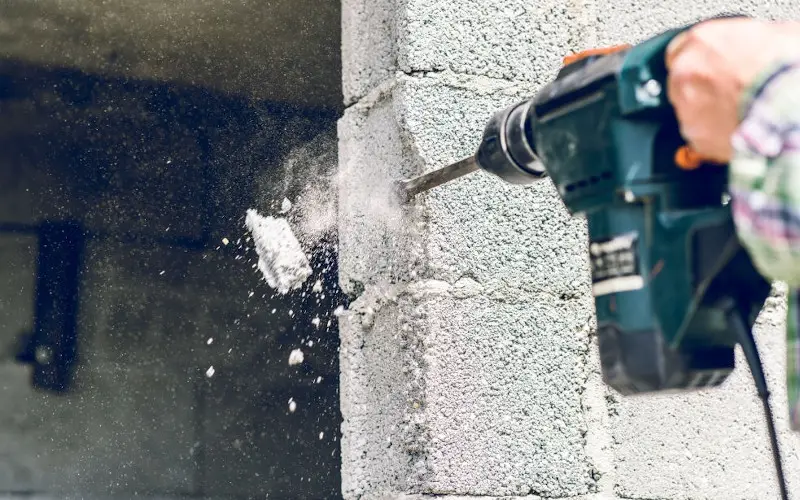
- Used for enlarging holes in masonry – This can be perfect when needing to add wires or cables through walls.
- Pounding nails – They are strong enough to drive nails into materials such as thick wood.
- Durable – They are also very durable allowing them to be used for both small and complex jobs.
- Making masonry cuts – The hammer drill allows you to make cuts in materials such as marble, granite, and other stones.
- Installing bolts and lag screws into wood, metal, or masonry – They can be used in much the same way as a traditional screwdriver.
- Installing chisels and blades into saws – This drill can be used to tighten the screws of any blades or chisels that may need attention.
- Driving long lag bolts – They can handle long lag bolts that would be impossible for a regular drill to drive.
- Cutting into brick, block, or concrete – The hammering action allows you to make holes in these materials without the drill getting stuck.
- Can be used to replace existing locks on metal doors – The power and durability of the drill allow you to eliminate old locks.
- Drilling to hard surfaces – They can be used to drill through hard surfaces such as steel, tile, and grout.
- Making holes – They can make holes in brick, cinder block, and concrete without the drill getting stuck.
What are the Differences Between an Impact Driver and a Hammer Drill?
There are several differences between the two tools such as weight, power source, and uses.
The following are the differences:
- Impact drivers are generally much lighter than hammer drills which makes them easier to use in tight spaces. Hammer drills on the other hand tend to be bulkier and have shorter battery life.
- Hammer drills are powered by a cord which makes them more difficult to use in tighter spaces, whereas an impact driver is powered by a battery.
- Impact drivers are used to driving screws into harder materials, whereas a hammer drill’s main purpose is to be used to drill holes in materials such as concrete.
- Hammer drills are heavier than impact drivers due to their power source and size, this makes the impact driver much easier to use in small spaces.
- Impact drivers are more suitable for smaller tasks because of their lighter weight and battery power, whereas tools such as hammer drills are better for big jobs because of their corded power source.
- Hammer drivers can apply a hammering action to drill bits, whereas an impact driver does not. This is because the impact driver has a reverse torque which counters problems such as shattering and chipping when used with hard materials.
- An impact driver can be used to drill into smaller materials such as metals and woods, whereas a hammer drill has a more suitable power range for materials such as concrete.
- An impact driver is a far better tool to use when driving screws into hard surfaces such as metals and woods, whereas a hammer drill can make holes in these materials.
- An impact driver is lighter than a hammer drill, making it more suitable for drilling into small spaces.
- An impact driver has a reversing action that counters shattering and chipping.
- A hammer drill is better to use on materials such as concrete, whereas an impact driver is better for driving screws into harder materials.
- Hammer drills have a corded power source, whereas an impact driver has a battery-powered source.
- A hammer drill can make holes in materials such as concrete, whereas an impact driver does not.
This video shows the the differences between an impact driver and a hammer drill:
FAQs
Can You Drill Into Concrete With An Impact Driver?
Yes, an impact driver can be used to drill through concrete because the impact driver can reverse torque, this means that when it is used with hard materials such as concrete or bricks, it has an added power that prevents shattering and chipping.
Why Use An Impact Driver Instead Of A Drill?
Although a drill can drive screws, it lacks power and therefore can chip and shatter when used with hard materials. With enough force, this can cause the screw to break inside the material which is not only time-consuming but also damages the material.
This doesn’t happen with an impact driver because reverse torque prevents problems such as chipping and shattering.
Can You Use Hammer Drill For Screws?
Yes, a hammer drill can be used for screws. This is because the hammering action which an impact driver does not have, allows the user to drive screws into harder materials without any problems.
Can An Impact Driver Be Used As A Screwdriver?
An impact driver is designed to be used with screws and therefore can drive small screws with ease. Although it cannot be used as a screwdriver, the impact driver can be used to drill into small materials such as metals and wood.
Can I Use Impact Driver To Remove Lug Nuts?
The short answer would be no because lug nuts need to be taken off with more force than the impact driver has. The reason for this is that lug nuts are very tight and need a lot of force to remove them.
Do Impact Drivers Need Special Bits?
No, an impact driver does not require special bits to be used. This is because the impact driver has a reverse torque which prevents shattering and chipping when used with hard materials.
Is An Impact Driver Better Than A Hammer Drill?
Although both impact drivers and hammer drills have their uses, an impact driver is considered to be a better option because it can drive screws and therefore can be used for smaller tasks.
On the other hand, a hammer drill can be used as an impact driver but cannot be used for tasks such as driving screws.
Can You Use Hammer Drill For Wood?
Yes, a hammer drill can be used with wood due to its ability to provide a hammering action. The hammering action which the impact driver does not have means that it can be used with harder materials such as concrete and bricks.
Can You Use A Impact Driver As A Impact Wrench?
Although an impact driver and impact wrench work, in the same way, they are different tools. An impact driver is designed to be used with screws whilst an impact wrench is designed to be used with lug nuts.
Will A Hammer Drill Go Through Concrete?
Although a hammer drill can be used with concrete, it cannot go through it because of its corded power source. The hammer drill works by driving a rotating bit through the material which requires it to be plugged into an electrical source such as a plug socket.
Can You Use SDS Bits In A Hammer Drill?
As a hammer drill does not require special bits to be used, it is compatible with the use of SDS (sandsetting designation system) bits. Sds bits are usually found in a drill/driver and can be used to drive screws providing they have the right size.
What Is The Difference Between An Impact Driver And A Drill?
The main difference between the two is that an impact driver has a reversing torque that prevents problems such as chipping and shattering whilst a drill can drive screws.
This makes an impact driver more flexible than a drill because it can be used for various tasks such as driving screws and drilling into materials.
Conclusion
An impact driver is designed to be used with screws and therefore can drive small screws with ease. Although it cannot be used as a screwdriver, the impact driver can be used to drill into small materials such as metals and wood.
In comparison to a hammer drill, an impact driver is considered to be a better option because it can drive screws and therefore can be used for smaller tasks. On the other hand, a hammer drill can be used as an impact driver but cannot be used for tasks such as driving screws. Although both tools work similarly, they are used for different tasks.

